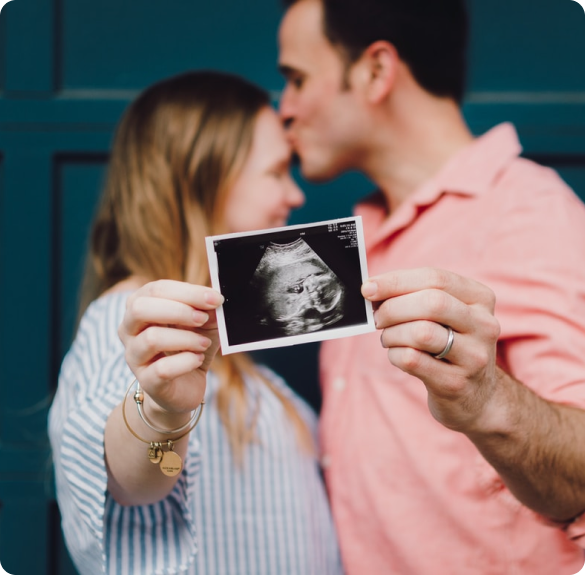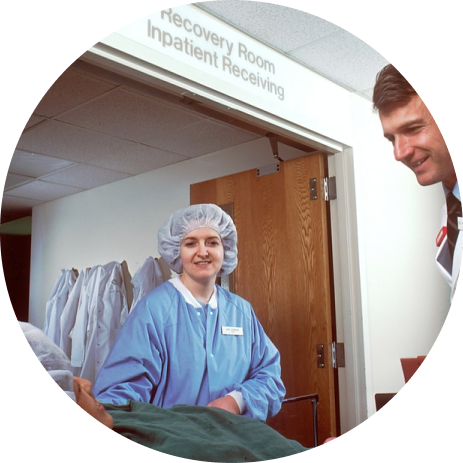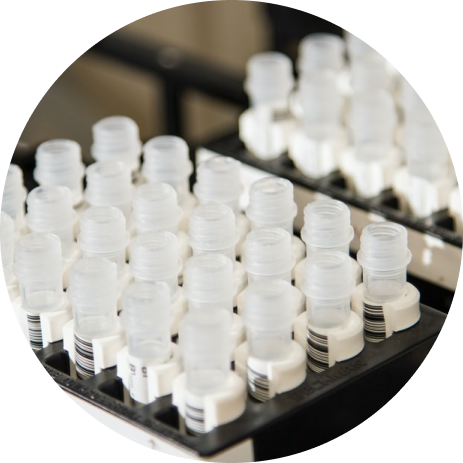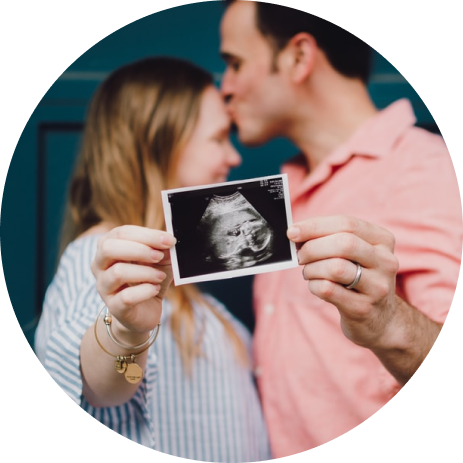What is IVF?
IVF stands for ‘ in vitro fertilisation ’. It is one type of Assisted Reproductive Technology (ART) used to treat fertility problems and assist with conception of a child. Our focus is to help you fall pregnant and our expert team will formulate the most effective treatment plan depending on your individual situation. We bulk bill IVF for the majority of medicare eligible expenses. It is important to remember that not all couples require IVF.
IVF involves bringing the eggs and sperm together in a dish in the lab. IVF is used to overcome a range of fertility issues. The embryo formed is transferred into the uterus five days after egg collection.

How does it work?
01
Controlled Ovarian Hyperstimulation (COH)
COH involves the use of medications to stimulate growth and development of multiple follicles within the ovaries. The process involves approximately 10-12 days administering daily injections of follicle stimulating hormone (FSH) and is monitored closely with ultrasounds and blood tests to control the size and quantity of follicles recruited.
To assist with the final maturation and detachment of the egg from the follicle wall, a trigger injection is administered prior to egg collection.

02
Egg Collection
This takes place around 36 hours after the trigger injection and will be performed by an IVF specialist under anaesthetic. A fine needle passes through the vaginal wall and into the follicles within the ovary to aspirate the follicular fluid which may contain an egg. The number of eggs collected will vary and is dependent on several factors.

03
Insemination / Fertilisation
Insemination of the eggs with sperm occurs using either standard IVF or a technique called ICSI. The inseminated eggs are then placed in an incubator for 16-18 hours and will be checked for signs of fertilisation.

04
Embryo Culture
Embryos develop within the incubator for 5 days (blastocyst stage) to increase their chance of implantation.

05
Embryo Transfer
An embryo is selected for transfer into the uterus. This is done using a transfer catheter, which is placed through the cervix and into the uterine cavity. This is a simple procedure, similar to a pap smear and does not require an anaesthetic. Any other suitable embryos can be frozen for use in subsequent treatment cycles.

06
Pregnancy Test
A blood test is performed approximately 11 days after embryo transfer has occurred, to determine whether you are pregnant.

Every IVF journey is as individual as you are
The chance of a successful IVF treatment cycle is as individual as the patient. However, the biggest factors affecting success are the following:
- Age
- Weight
- Lifestyle choices
Not every IVF cycle initiated will result in an egg collection, a fresh embryo transfer or embryos suitable for freezing. The data used to determine Adora Fertility IVF treatment success rates includes all patients utilising their own eggs and no PGD/PGS genetically-screened embryos. It combines all insemination types (IVF and ICSI).
To find out more about our bulk bill IVF treatments and whether they are right for you, get in touch with our expert team.
